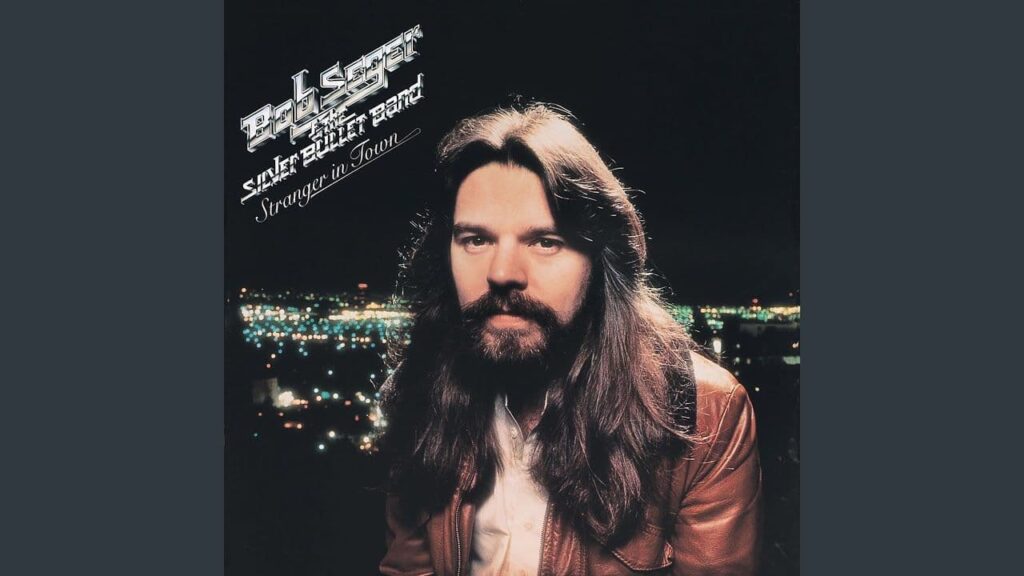
The Wild Spirit’s Call: A Reckless Anthem of Youthful Freedom, Restless Pursuit, and the Open Road
Bob Seger‘s raw, electrifying anthem, “Ramblin’ Gamblin’ Man”, wasn’t just a song; it was a defiant roar, establishing his gritty, no-nonsense rock and roll bona fides and laying the groundwork for his legendary career. Released as a single in October 1968, this powerhouse track became Seger‘s first true national hit, clawing its way up the charts to an impressive number 17 on the Billboard Hot 100 pop chart. Its success was immediate and undeniable, resonating with a generation yearning for authenticity and unbridled rock energy. Featured as the title track on his debut album with The Bob Seger System, “Ramblin’ Gamblin’ Man” (released in April 1969, which peaked at number 34 on the Billboard 200 albums chart), the song became an instant classic, beloved for its raw vocal performance, its driving rhythm, and its irresistible garage-rock swagger. It solidified Seger‘s reputation as a powerful and honest voice in American rock music, appealing to millions who connected with his tales of restless spirits and the pursuit of freedom, long before he became the heartland hero we know today.
The story behind “Ramblin’ Gamblin’ Man” is deeply intertwined with Bob Seger‘s own early experiences and his unyielding ambition as a young musician in Detroit. Written entirely by Seger, the song is a direct reflection of his youthful energy, his desire to escape the confines of a conventional life, and his burgeoning confidence as a performer. It captures the essence of a restless spirit, a young man eager to hit the road, experience life on his own terms, and take chances. While the lyrics evoke the imagery of a card shark or drifter, they serve as a powerful metaphor for the risks and adventures of pursuing a dream, particularly a rock and roll dream, in an era that was ripe with rebellion and self-discovery. The song’s energetic, almost wild, feel perfectly mirrors the “gamblin’ man” persona—someone who plays for high stakes, not just at the card table, but in life itself. It’s an autobiographical glimpse into the early mindset of an artist determined to make his mark, embracing the unpredictable journey with open arms and a fierce, independent spirit. This track was recorded during a fertile period for Seger in Detroit, showcasing the raw, unpolished power that would eventually define his sound.
The meaning of “Ramblin’ Gamblin’ Man” is an electrifying anthem of youthful independence, restless ambition, and a daring embrace of life’s uncertainties and risks. It’s a song about a free spirit who rejects conventional paths, choosing instead a nomadic existence filled with adventure, chance-taking, and an unyielding pursuit of personal freedom. The lyrics convey a bold confidence, a willingness to face any challenge, and a slightly rebellious attitude towards societal norms, celebrating the thrill of the open road and the excitement of living by one’s own rules. The “gamblin'” aspect symbolizes not just card playing, but the inherent risks taken in life, love, and the pursuit of one’s dreams. Lines like “I was born a ramblin’ man, and I’m gonna keep on ramblin'” perfectly capture this defiant self-declaration and the joy of an unconstrained existence. It speaks to the universal human desire for autonomy, the exhilarating feeling of breaking free from expectations, and the enduring allure of a life lived on one’s own terms, making it a timeless ode to youthful exuberance and the thrilling unpredictability of the open road.
Bob Seger‘s vocal performance on “Ramblin’ Gamblin’ Man” is nothing short of iconic, a guttural, soulful roar that perfectly embodies the song’s wild energy. His voice, raw, powerful, and brimming with unvarnished passion, delivers the lyrics with an undeniable swagger and a fierce determination. He belts out the words with a conviction that makes every line resonate with authenticity, channeling the restless spirit of the “ramblin’ man.” The instrumentation by The Bob Seger System is just as potent: a driving, insistent drum beat, a pulsating bass line, and searing guitar riffs create an infectious, garage-rock sound that is both primal and incredibly tight. The inclusion of the organ, notably played by a then-unknown Glenn Frey (who would later co-found the Eagles), adds a crucial layer of soulful texture, hinting at the depth that would characterize Seger‘s later work. The production is raw and immediate, capturing the band’s live energy with startling clarity. This track became a definitive early statement for Seger, showcasing his unique blend of rhythm and blues, garage rock, and heartfelt lyricism, firmly establishing him as a force to be reckoned with.
Listening to “Ramblin’ Gamblin’ Man” today evokes an immediate rush of pure, unadulterated rock and roll nostalgia, transporting us back to the late 1960s when Bob Seger first burst onto the national scene with his electrifying sound. It reminds us of youthful exuberance, the thrill of rebellion, and the intoxicating call of the open road. For those of us who recall its pervasive presence on the airwaves and its indelible mark on the era, this song remains a cherished gem, a timeless anthem for restless spirits and the enduring allure of a life lived on one’s own terms. It’s a melody that, even after all these years, continues to pump through the speakers, making us tap our feet, sing along with its defiant chorus, and remember that exhilarating feeling that only a true “ramblin’ gamblin’ man” could ever truly embody.